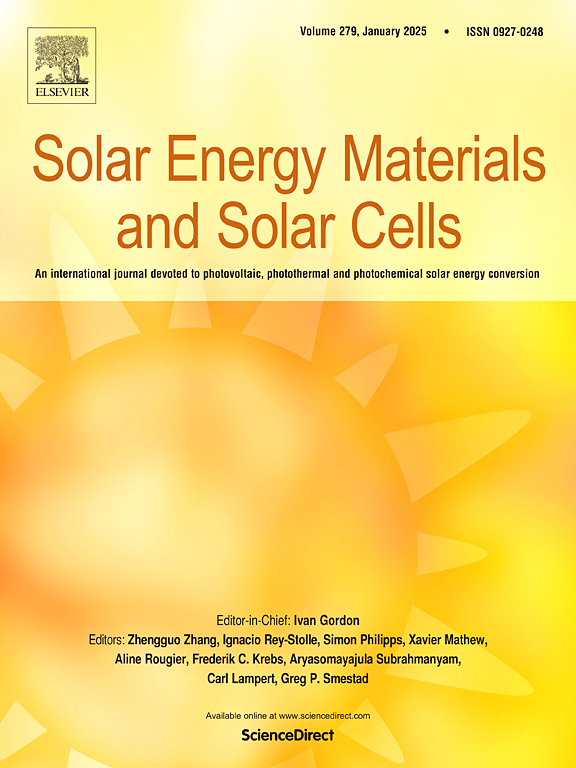基于三苯胺取代三联吡啶与过渡金属离子配位的多色电致变色金属聚合物
IF 6.3
2区 材料科学
Q2 ENERGY & FUELS
引用次数: 0
摘要
多色电致变色材料的设计与合成对于推进动态显示技术和增强智能材料在各种应用中的功能至关重要。本研究利用Fe2+、Ru2+、Zn2+、Co2+、Pd2+、Ni2+ 6种不同的过渡金属离子,通过一步电化学聚合法制备了一系列三苯胺取代三吡啶配位金属聚合物(CMP)薄膜。这些金属离子作为氧化还原中心,与三苯胺结合,生成的CMP薄膜具有优异的变色性能(ΔT:在700 nm处p-FeL2为59.8%)和高显色效率(p-FeL2为307.8 cm2 C−1)。系统地比较了六种金属配位聚合物薄膜的电致变色性能,全面分析了不同金属离子对金属到配体电荷转移效应驱动的结构-电致变色性能关系。此外,我们将CMP薄膜与V2O5集成在一起,创建了一个混合电致变色装置,该装置显示了可逆的颜色变化。这些结果突出了CMP薄膜在开发多色显示器和推进电致变色技术方面的潜力。本文章由计算机程序翻译,如有差异,请以英文原文为准。

Multicolored electrochromic metallopolymers based on triphenylamine-substituted terpyridine coordination with transition metal ions
The design and synthesis of multicolored electrochromic materials are essential for advancing dynamic display technologies and enhancing the functionality of smart materials in various applications. Here, we have developed a series of triphenylamine-substituted terpyridine coordination metallopolymer (CMP) films through one-step electrochemical polymerization, utilizing six different transition metal ions: Fe2+, Ru2+, Zn2+, Co2+, Pd2+, and Ni2+. These metal ions serve as redox centers, combined with triphenylamine, to produce CMP films exhibiting exceptional color change performance (ΔT: 59.8 % at 700 nm for p-FeL2) as well as high coloration efficiency (307.8 cm2 C−1 for p-FeL2). The electrochromic properties of the six metal-coordinated polymer films were systematically compared, providing a comprehensive analysis of the structure-electrochromic property relationship driven by the varying metal-to-ligand charge transfer effects associated with different metal ions. Additionally, we integrated the CMP films with V2O5 to create a hybrid electrochromic device, which demonstrated reversible color changes. These results highlight the potential of CMP films for developing multicolor displays and advancing electrochromic technologies.
求助全文
通过发布文献求助,成功后即可免费获取论文全文。
去求助
来源期刊

Solar Energy Materials and Solar Cells
工程技术-材料科学:综合
CiteScore
12.60
自引率
11.60%
发文量
513
审稿时长
47 days
期刊介绍:
Solar Energy Materials & Solar Cells is intended as a vehicle for the dissemination of research results on materials science and technology related to photovoltaic, photothermal and photoelectrochemical solar energy conversion. Materials science is taken in the broadest possible sense and encompasses physics, chemistry, optics, materials fabrication and analysis for all types of materials.
 求助内容:
求助内容: 应助结果提醒方式:
应助结果提醒方式:


